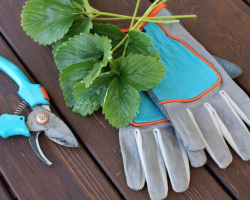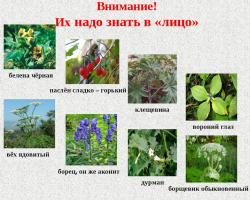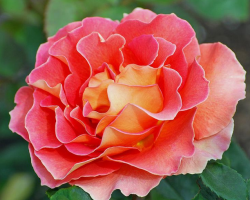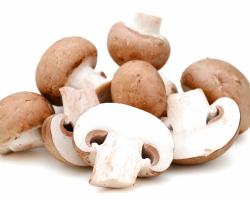Air roots are needed by orchid to receive nutrients from the soil and air. But they require special care.
Content
- What are the roots of the orchid air: photo
- Why orchids are air roots, is it needed: the reasons for the appearance, why let it go?
- How the air roots of orchids differ from the usual: structure
- What are the main functions of the orchid roots?
- What to do with large air long roots of orchids during transplantation: can you bury?
- Do I need to cut, remove the air roots of orchids?
- Is it possible to propagate the orchid with air roots?
- The subtleties of caring for an orchid, if she has a lot of air roots
- Orchid - there were only air roots: what to do?
- Possible problems: Air roots of orchids dry, how to save?
- Why does the orchid have no air roots?
- Video: What to do with the air roots of the orchid when there are a lot of them?
- Video: Air orchid roots - cut or instill?
- Video: taming long air roots of an orchid. The orchid fell on its side. I align when landing ...
The flower growers fell in love with an orchid - a capricious beauty from the tropics, for her abundant and long flowering. But beginners do not know what to do with air roots. Some try to put them in a pot, others - cut, others are simply examined and perplexed what to do.
Read on our website another interesting article on the topic: "Florarium with your own hands for beginners". You will learn how to do it using Tiffany, in a round aquarium, in a bank, with an orchid. Step -by -step instructions, photos, videos and different ideas will help in this.
To know, what to do with the aerial roots of the orchids, one should study functional activity and their adaptability to living conditions. Read further.
What are the roots of the orchid air: photo
Orchids - immigrants from the tropics. Epifite crops have not only underground roots, but also aboveground (air). Thanks to these processes, orchids can easily be attached to rocky breeds, trees, small stones, and wrap other plants. Through the aboveground roots, the culture receives all the necessary beneficial substances and liquid.
Here are a photo, what are the roots of the orchid:


Volumetric air roots with cellular texture have a cylindrical shape. Such a surface does not interfere with obtaining liquids and minerals from lichens, dead beetles, bird droppings, and foliage lying on the ground. All the elements obtained help the plant live and develop.
Why orchids are air roots, is it needed: the reasons for the appearance, why let it go?
The functionality of the air roots of orchids is very unusual. But this flower uses large plants not to obtain nutrients from them, with the help of their air roots, but as a support for development. That is, it is not a parasite.
So why is the orchid airy roots, is it needed? Below are the reasons for the appearance and why the flower lets them in.
- If you take ordinary plants with a uterine or rod root system, then thanks to these roots, the culture receives all the necessary substances from the soil for growth. As for the orchids, this method is unacceptable for them. Their homeland is tropical forests, but there is no such soil.
In representatives of the family, orchid (for most), the root system is a subordinate roots that perform 2 functions:
- The absorption of moisture and nutrients from the natural environment, the delivery of the resulting elements to the stems, leaves and colors.
- Providing reliable fastening to support or on the basis.
The last function is especially important for orchids, since in the tropics they are subjected to heavy rains and impulsive winds.
How the air roots of orchids differ from the usual: structure

In natural nature, orchids do not grow in the soil familiar to us. Their subordinate shoots are formed along the main stem, the plant does not have the main root system.
When growing in room conditions, part of the roots of culture is placed in special soil, in this regard, aboveground sprouts thicker than underground. Beginners cannot immediately determine whether the orchid threw a peduncle or this is another air root. Indeed, in the first and second case, the same gap is formed at the base of the leaf.

How do the air roots of orchids differ from the usual ones? Distinctive features of air roots - structure:
- Are located in the transition zone from the spine to the stem, between the plates
- The escape is directed down
- The top is rounded, dumb

From above, the aboveground root is covered with a protective upper layer - velamen. This is necessary in order to reduce the likelihood of mechanical damage. After hygroscopic tissue, follow:
- The central cylinder is formed from conductive fabrics
- Velamen - hygroscopic tissue
- Parenchyma of the cortex consisting of chlorophyll -bearing cells
The central cylinder consists of two zones:
- Pericipclic (homogeneous and heterogeneous, single -layer or multilayer)
- Conducting
Velamen is a layer of dead cells that absorbs well and gives moisture like a sponge. In natural conditions, the thickness of this layer depends on how much it can dry between the rain periods.
In natural varieties, aboveground roots have a huge length - they cover wood trunks, wrap stone rocks, plants, but do not eat their juice. The houses of orchids are grown in the substrate, which serves plants with a support and a means from which culture can get liquid and nutrition.
What are the main functions of the orchid roots?
Air roots perform the main function - provide orchid with useful substances. Such a system is necessary for a culture for its sufficient cultivation and development. Thanks to her, the formation of new "children" takes place. As mentioned above, in the wild, air roots help the culture to gain a foothold on rocky rocks and tall trees. The orchid cannot get food from the soil, so she is forced to produce more and more processes that absorb liquid and nutrients from the air and absorb sunlight. According to them, you can determine the age of the orchids and its health.
To understand how many years to the plant, it is important to carefully examine the roots and, first of all, pay attention to the color:
- Young roots have a bright green color
- The age copy has - the roots are pale, not bright
Attention:If young roots are not formed for a long time, then errors in the courtship process are made. In this regard, the culture has significantly reduced immunity and is the likelihood of infection with any infection. It is necessary to reconsider the rules of care.
What to do with large air long roots of orchids during transplantation: can you bury?
All plants must be transplanted, including an orchid. What to do with large air long roots of orchids during transplantation, can you bury? Explain:
- When changing the substrate and transplanting to a larger pot, experienced flower growers do not advise deepening the roots in the container and sprinkle them with the soil.
- It is advisable to lay the layouts in the pot and do not sprinkle the substrates on top.
- You can put the moss sphagnum on top. He will retain moisture and destroy pathogenic microbes.
During the transplant, you can propagate the orchid by choosing a healthy spine with several pseudobulbs. After cutting off the desired amount of planting material, grease the cut with green or sprinkle with activated coal with a chopped powder.
Do I need to cut, remove the air roots of orchids?

Orchid is a unique plant with an extraordinary root system. These air roots, gently say, irritate some flower growers, and they simply cut them so that nothing dangles and the flower looks neat. It is forbidden to do this - do not remove the air roots. After all, you can harm the flower. It is necessary to remove the aboveground roots with acute necessity:
- If the processing of processes occur
- The roots were dried
- They started to die
Those air roots that need to be removed can be determined by external signs:
- Shoots sharply changed color from saturated green to yellow, brown or black
- Cracks appeared on the surface
- Became wrinkled
- The surface was covered with oily liquid
- There are spots and intersperses of black
- The roots became "thin"
Healthy roots are also easy to determine by their external signs. In no case do not touch such processes:
- The roots of a healthy color
- Have a fleshy, "knocked down" structure
- Surface without cracks, uniform and smooth
- There are no signs of diseases
- No mechanical scratches are observed
Attention:It is forbidden to touch and injure healthy autonomic parts!
Is it possible to propagate the orchid with air roots?

Not all types of orchids can be propagated by aboveground roots. For example, falarenopsis This method is not suitable, this method can only rejuvenate the old plant. Just cut the top with a sharp knife with the roots and put in a new container. The stump should not be thrown away - you need to carry out regular care. After 3 months, young children will appear on the hemp.

Kattley, Tsimbidium and Pafiopedilum Easy to propagate air layering. All species at the end of the processes have pseudobulbe. Adult plants can be divided into several divisions. During the division of the rhizome, it is worth properly performing manipulations so as not to destroy the culture. Do this:
- Gently remove the orchid from the pot, shake the substrate.
- Lay out on the table, straighten the roots and cut off the rhizome so that each division includes 2-3 pseudobulb.
- Pour all sections with coal to avoid decay of damaged tissues.
- Put new bushes into separate pots.
Attention:Immediately after division and transplantation, it is forbidden to water new plants. The first watering is carried out after 6-7 days. This time will be enough for all wounds to drag out.
The subtleties of caring for an orchid, if she has a lot of air roots
The appearance of numerous roots cause inconvenience not only to the flower grower, it is not very convenient with them and the culture itself. To brighten up the discomfort, it is recommended to carry out a larger pitch with a specially prepared, disinfected substrate. The subtleties of caring for an orchid, if she has a lot of air roots:
- When transplanting, you should not turn the roots in the flower garden by force - soon the vegetative parts will find free space for themselves.
- It is forbidden to cut off the protruding layering if there is no damage on their surface and they are completely healthy.
- When choosing a new container, it is important to choose the right size. Ideally, if the roots of the orchids hide in the pot and there will still 2-3 cm free space for the further development of the root system.
In this case, the flower will be comfortable, and the flower growers will not annoy the sticking roots in different directions.
Orchid - there were only air roots: what to do?
If most of the roots are lost as a result of the development of rot, the flower itself dries, you can retrain the plant by deepening only a few processes. However, such rooting is possible only after cleaning the plant: removal of rotten roots, processing of sections, drying.
Advice: Do not completely deepen too long roots into the soil. Part of them can be left on the surface so that the oxygen flower receives the required nutrients.
The orchid, despite his whims, loves life very much and grabs any “straw”. While the underground part is in the process of resuscitation, the aboveground will absorb the necessary substances from the air and thereby support the life of culture. If there is an opportunity to propagate the orchid by the divisions, then it is a high probability that of the 4 pieces will take root 3.
Be careful:During resuscitation measures, it is important to do everything in series, as described above in the text.
Possible problems: Air roots of orchids dry, how to save?
Air processes of representatives of the orchid family - a natural state. With their help, a potted flower receives the required nutrition, according to their outer outlines, one can judge its condition, frequency and abundance of flowering, power, energy.
If such roots have received mechanical damage or subjected to fungal infection, it is possible that the flower may die. If visible signs of damage and possible problems of aboveground roots are found, it is important to immediately begin to solve the problem.
When watering and care, it is important to monitor the condition of the subordinate clans. If they are dense to the touch, have a bright, saturated silver green color, a surface without scratches and damage-do not sound the alarm, since the orchid is completely healthy. If, upon examination, it is found that the roots are wrinkled, lost their rich color, became faded, dark spots formed on the surface - all this requires a quick response to exclude problems.
So, the orchids of the orchids dry, how to save?
- It is important to establish the cause and eliminate it.
- Perhaps the plant has long been without water.
- If the case is not launched, you can solve the problem only by removing only the roots with damage and watering.
If the problem was neglected, it is required to transplant the orchid, having carried out all the resuscitation work, as described above.
Why does the orchid have no air roots?

Growing in the house the phalaenopsis, zimbidium, Pafiopedilum and Kattley is important to know the biological and physiological characteristics of each plant. It is recommended to listen to the advice of experienced flower growers. It is not worth doing anything with air roots, because thanks to them, epiphytic varieties receive nutrition and moisture from the outside. And it is vital for them, because it is difficult to survive in the tropics.
But what if the orchid does not have air roots? What reasons?
- When growing in the nature of orchids, only air roots are used. They help survive plants, absorbing moisture and nutrients from the soil.
- If the orchid is on a tree, these roots absorb nutrients from the air.
- In an apartment, if there are no air roots, then the plant was adapted to special soil. They plunged into the substrate due to the conditions of content.
If when growing an orchid in the house to carry out competent care, the plant will receive a good nutrition and will develop well. In this case, all autonomic parts will be healthy, and the culture will bloom for a long time and abundantly.
Video: What to do with the air roots of the orchid when there are a lot of them?
Video: Air orchid roots - cut or instill?
Video: taming long air roots of an orchid. The orchid fell on its side. I align when landing ...
Read on the topic:







